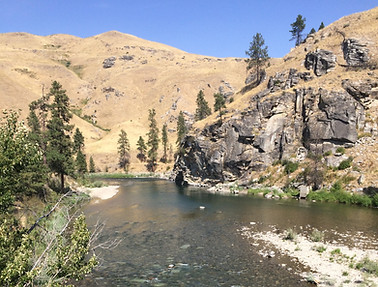


Projects and Accomplishments
Water Accounting Project
How will water availability affect future development in the Methow Valley? The Water Accounting Project is helping us find out.
The Methow Watershed Council (MWC) is charged with managing our water supply according to the Methow Valley’s Instream Flow Rule (“the Rule”), which sets legal limits on water withdrawal. The Water Accounting Project is evaluating current and future water use to support the community in creating a vision for the Methow’s future.
Go to the Water Accounting Project Page

Water 2066
Water 2066: A Vision for the Methow. How do we see our valley fifty years from now? How do we envision the future of agriculture? Tourist services? Growth? How do we proceed and honor our commitments to fish and wildlife?
All of these things depend on clean, available water. Water use and water rights continue to be a difficult subject to discuss, and often result in litigation if the opposing sides cannot find middle ground. The Methow Watershed Council is developing the Water 2066: A Vision for the Methow Project in an effort to step back from the current water use disputes and plan for the future.
Go to the Water 2066 Project Page

Public Outreach & Education
Part of the Mission of the Methow Watershed Council is to provide "on-going public education and awareness information" regarding water use management in the Methow Valley. To that end, the MWC hosts free public community discussions regarding water resources, voluntary water conservation incentives and efficient water management. Visit the Outreach & Education page for more details, and stay tuned for information on other presentations coming soon.


Wolf Creek Twin Lakes Storage Pilot Project
May 2019 Update
The Wolf Creek Twin Lakes Storage project, led by the Methow Watershed Council (MWC) and funded through a grant from the Washington Department of Ecology, has been in the feasibility phase since 2016. The MWC has decided (in February 2019) that the project does not appear feasible at this time, and is discontinuing work on it. Beyond the feasibility analysis, the project did implement the installation of screen box automation, which saves a significant amount of water and Wolf Creek Reclamation District (WCRD) staff time.
With any feasibility study, a possible outcome is a determination of non-feasibility, and this is the case with this project. The proposed project would have involved modifying water rights of the WCRD, in order to divert water from Paterson Lake into Twin Lakes. The study delved into water rights, hydrology and water availability, land use and ownership, alternative layouts, cost estimates, water quality, and operations. Over the course of the feasibility study, the MWC strove to involve and inform a broad range of stakeholders such as agencies, tribes, towns, NGO’s, and community groups. One well-attended public meeting took place, as well as numerous meetings with key stakeholders. WCRD ultimately decided they could no longer support the project, citing concerns about their existing rights. Understandably, water rights are consistently the most challenging aspect of this type of project.
The Twin Lakes Aquifer Coalition (TLAC) plans to continue work on analysis of other project concepts to restore Twin Lakes. The MWC does not plan to have any formal involvement in their efforts.
Methow Water Use Study
In 2009 the Council hired Aspect Consulting to study current water use in the Methow Valley. They found that there is the potential of a water shortage, with the greatest risk in the lower valley. Read the study here.
